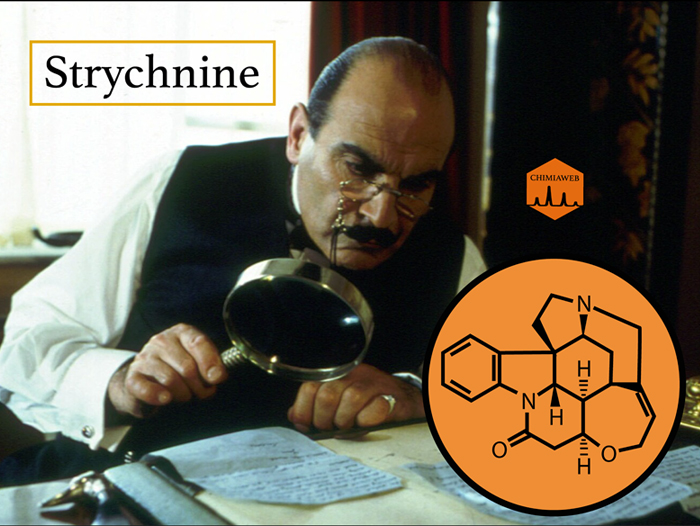The name “strychnine” may sound familiar to you. If you are wondering why this name rings a bell for you, it is because this poison has been used numerously in mystery novels. Agatha Christie was one of the famous novelists who introduced strychnine as her favorite murder weapon. She had a great knowledge of poisons, as she worked voluntarily first as a nurse and later as a pharmacy assistant during World War.
Surrounded by several chemicals, Agatha Christie was inspired to use poisons meticulously in her detective stories. In her first crime novel, “The Mysterious Affair at Styles”, Hercule Poirot, her punctilious detective, intelligently solved a crime mystery involving strychnine poisoning. Now, let’s look at the chemistry of this fatal poison, which has been the subject of many stories.
Strychnine is an extremely toxic chemical compound. This poison is an alkaloid with the chemical formula C21H22N2O2. It was first isolated from the seeds of Strychnos species trees, native to India and South Asia, in 1818. It is a white odorless crystalline powder with an intense bitter taste. In fact, it is known as one of the bitterest natural substances.
The chemical structure of strychnine was determined by Robert Robinson in 1946. Later, in 1954, it was first synthesized chemically by Robert Woodward and his colleagues. Both chemists received the Nobel Prize in Chemistry for their research in 1947 and 1965, respectively.
Strychnine acts as a blocker at glycine receptors, which are the major inhibitory neurotransmitters in the spinal cord and the brain stem. The features of strychnine poisoning occur at 15–30 minutes after ingestion or inhalation. They include muscle twitches, stiffness of the body, and painful generalized convulsions without loss of consciousness. Death is due to the spasm of the respiratory muscles, resulting in breath cessation.
Strychnine has been used as a strong rodenticide for more than a century. Today, its use is restricted due to its high toxicity. Also, domestic animals, such as dogs, may be poisoned by accidental ingestion of baits designed for use against rodents. In some countries, a special license is required to buy and apply it for agricultural uses.
Strychnine has also been used in traditional herbal remedies, especially in Southeast Asia. It was applied as a therapeutic agent in several products, such as sedatives, digestive aids, and stimulants. In some cases, small amounts of strychnine have been found mixed with lysergic acid diethylamide (LSD), heroin, cocaine, and other “street drugs” as adulterants.
Low doses of Strychnine give people a feeling of stimulation. That is why low doses of strychnine are thought to have performance-enhancing qualities, though it has not been proved yet. Thus, strychnine was abused by some athletes in competitive sports. “The 1904 Olympic Marathon”, “the 2016 Olympic weightlifting”, and “the 1959 Tour de France” were among several reports in which the athletes tested positive for strychnine. The World Anti-Doping Agency has banned this substance.

